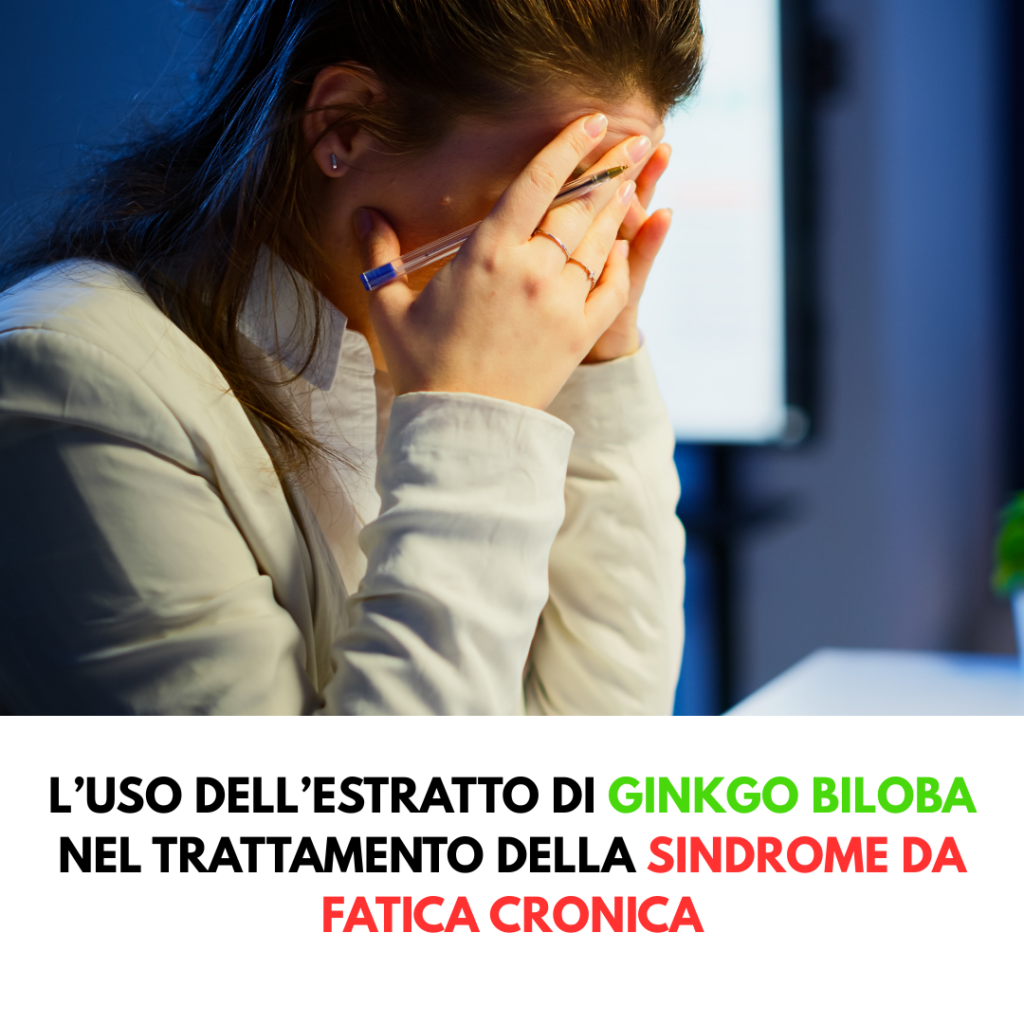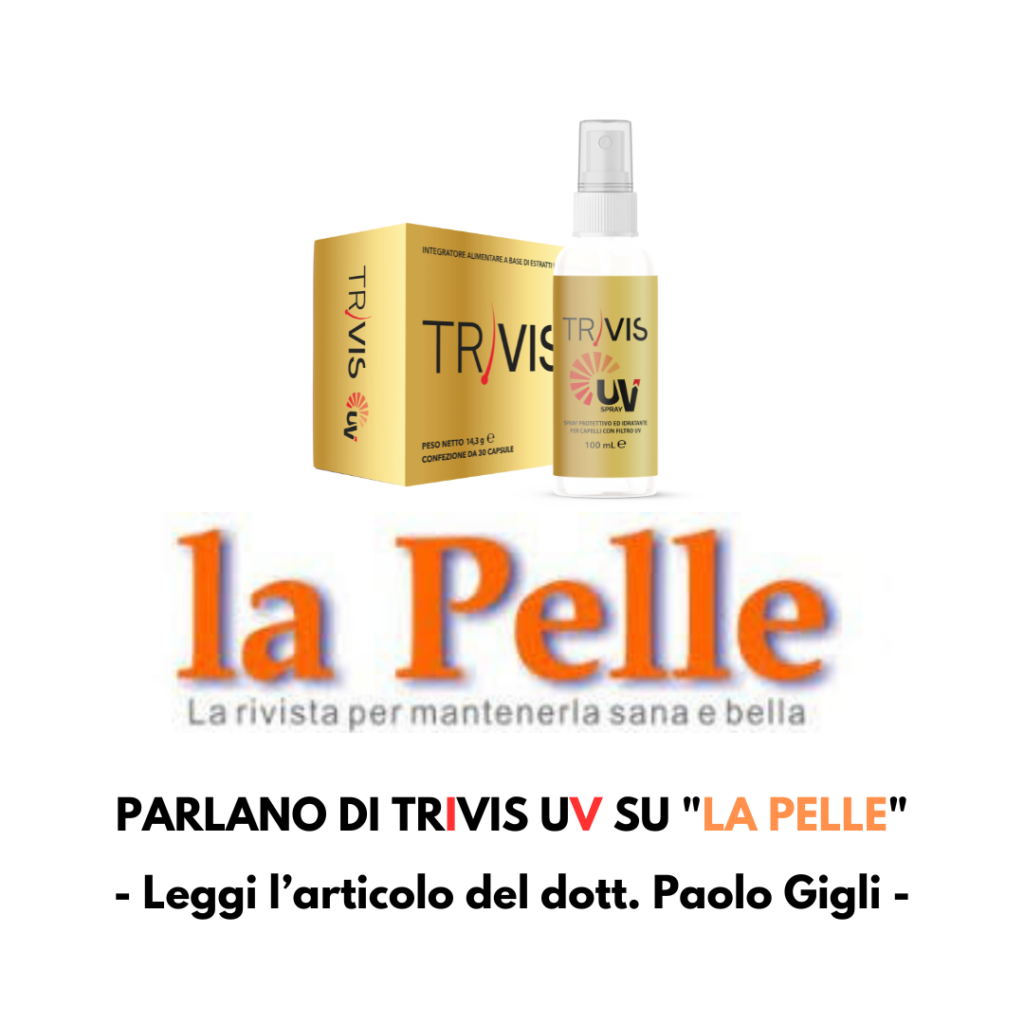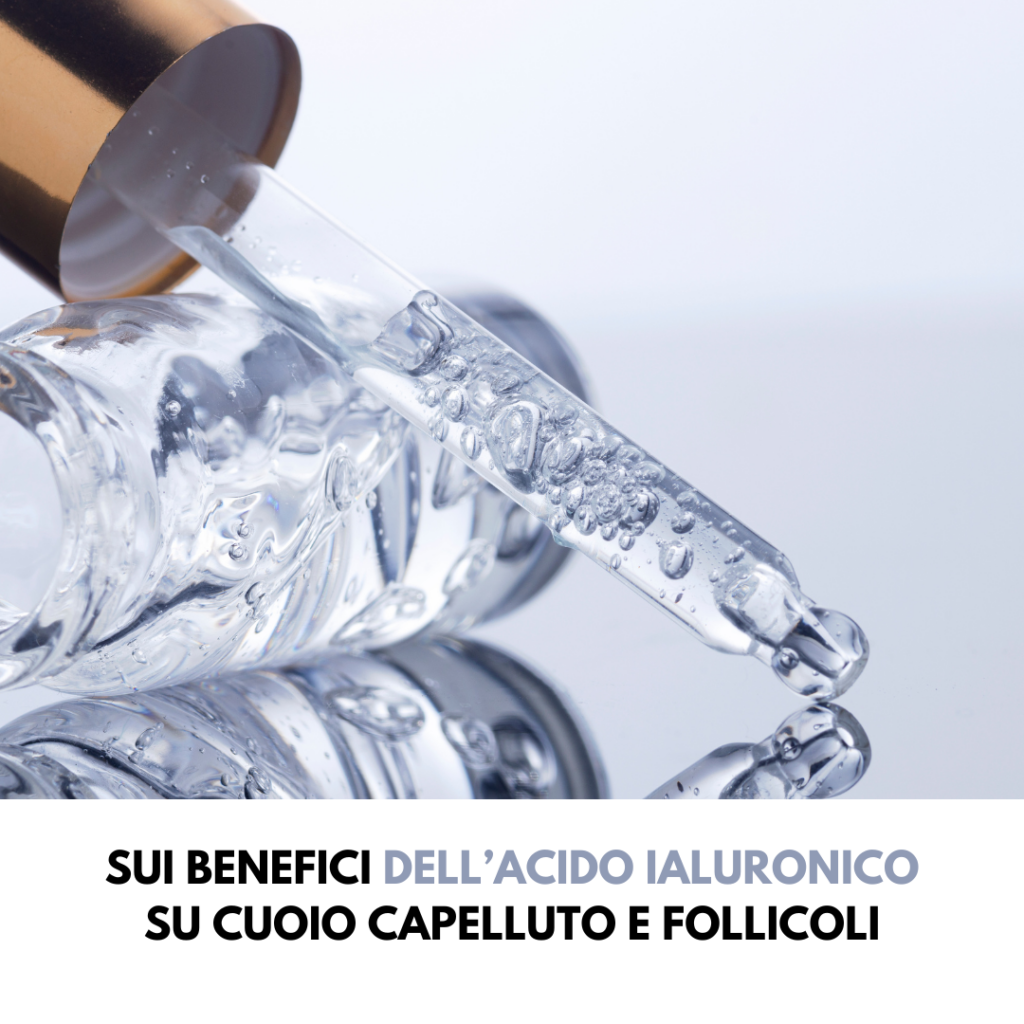Scientific articles
RESTAX DONNA PLUS AND
POST-MENOPAUSAL FEMALE ALOPECIA

Dr. Paolo Gigli
Physician specializing in dermatology and venereology
Adjunct professor in medical and surgical trichological sciences at.
the University of Florence
Founding member of the Italian Society of Trichology
Deputy Scientific Editor of the Italian Journal of Trichology
What does a woman with postmenopausal female alopecia look like clinically, and what metabolic pathway should be taken for a proper therapeutic approach?
Postmenopausal female alopecias are routinely forms that have an estrogen deficiency as their basis.
Basically, the postmenopausal woman needs estrogen, which is a good hair nutrient, and this deficiency causes problems at the follicle level in the form of thinning and reduced duration of the Anagen phase, which is the initial process during which hair grows.
This results in a gradual and progressive thinning and thinning of the hair. The characteristic pattern of thinning found in postmenopausal women was originally described by Ludwig, in fact it has
been referred to as the Ludwig Pattern: it begins with thinning starting from the central area of the head. The hairline is typically respected, is intact, the thinning is central, and tends progressively from the central area to spread centrifugally toward the periphery. There are variants of this thinning, in which the frontal area is predominantly more affected, which are also called “Christmas tree” Alopecias in that the thinning has its base on the forehead, the apex toward the vertex, and thus the thinning takes on a shape resembling that of a triangle; however, these are variants due to chemical influences.
Typically, the postmenopausal woman who loses her hair due to postmenopausal female alopecia has this shedding that starts in the center of the head and spreads to the periphery. Usually the hairline remains intact, and there is also a reason why the hairline is less affected than the rest: the hairline follicles in women are very rich in the aromatase enzyme, which we will discuss later, which converts the male hormones, androgens, to estrogens, and therefore these follicles in the frontal area are protected and are not affected by female alopecia.
The metabolic pathway that clearly prevails in these cases is estrogen: there is a deficiency of estrogen that goes some way practically to reducing the duration of the Anagen phase, the hair progressively thins, miniaturizes. It seems clear that androgens in this type of Alopecias play a rather marginal role since women have very little of them circulating, and in this case it is more the decrease in estrogen that causes the problem rather than the increase in androgens. Female Alopecias due to androgen increase are very rare, most often due to completely different issues, often due to various diseases that produce an increase in androgens including: the polycystic ovary in childbearing age or, much more rarely, tumors and neoplasms that produce androgens; but these are quite rare cases and that among other things have a completely different mode of clinical presentation from the one just described since they manifest as male Alopecias, with receding hairline and emptying of the vertex.
Among the various known phytoestrogens with beneficial effects we know about hops and Kudzu isoflavones: of which can you give us some information about?
There are so many types of isoflavones around the world since there are so many plants that contain them. It is clear that companies that produce supplements and phytocomplexes try to use those that have particularly effective actives with limited side effects; usually the classic soy isoflavones are used, which are the ones that have been known for so many years now, although over time other natural sources of phytoestrogens have been found including hops and even the kudzu. They are particularly interesting because hops, which is then what we all know as the essence of beer, contains a lot of phytoestrogens. Of course, it should be specified that beer itself cannot be an advocate of the effects described here, because here the technology with which the phytocomplexes are produced comes into play, since the manufacturer has to titrate his products, he has to make sure that these phytocomplexes have high titrations.
Hops are very important because they contain a substance called “hopein,” which is very rich in phytoestrogens, a very potent substance. The phytoestrogens that are contained are much more potent than genistein and daidzein, so they could be said to have “an edge” over soy isoflavones. This gives hops a strong ability to bring about estrogen-like effects, albeit in a natural way. One must also consider that hops, again because of this phytoestrogen content, has very incisive effects on the central nervous system as a mood stabilizer, going on to reduce irritability, anxiety and even insomnia.
These are a whole range of mechanisms that can be useful in treating Postmenopausal Alopecias, because women in
menopause sometimes suffer from mental disorders that may be related to estrogen deficiency. So hops is
certainly an interesting source of phytoestrogens, provided of course that the user can titrate it and get acceptable, and above all, standardized, repeatable percentages of phytoestrogens, because the quality of an herbal product lies in just that: in the titration and standardization of phytocomplexes. If one only extracts the raw materials without a criterion, the products may have absolutely no reproducible efficacy over time, so it is very important that there is underlying standardization and titration of the actives.
Kudzu is a Chinese plant rich in a molecule called Pueraria, which then gives the plant its name. It, too, is rich in phytoestrogens, genistein and daidzein min in particular, and this plant also provides a high content of these while simultaneously having effects on the central nervous system. In particular, the phytoestrogens contained in the plant
behave as adaptogens and tend to stabilize serotonin and dopamine levels, generating positive effects on mood.
With this “boost” of estrogen we go on the one hand to manage the deficiency of the same, which is important for hair, and on the other hand we have a mood-stabilizing effect due to the activity these estrogens have on the central nervous system.
How fundamental do you think pharmaceutical standardization is?
Pharmaceutical standardization is basic and fundamental. When administering so-called supplements, we use a limiting term. A bureaucratic term that the Ministry of Health imposes on us to identify these kinds of preparations. In the end, with the standardization and titration that we are able to achieve from phytocomplexes, these are preparations that have intense activity, and so they have to be managed in roughly the same way as a drug or in a very similar way. These are products to be administered by physicians; they are not products suitable for self-administration.
Agnocaste, on the other hand, belongs to the phytoprogestin category: metabolically, how does it behave?
Agnocaste behaves like a progestin, since it is not an estrogen; it acts differently. It can be said to have different fields of application: it has different actions on the hair follicle that are non-hormonal, but it increases the expression of Beta-Catenins Wnt (which act at the level of protection of the cytoskeleton and cellular junctions) and reduces the release of an inhibitory growth factor called TKK 1, which in turn inhibits
follicle activity. On the one hand, this mechanism induces Anagen, i.e., facilitates keratinocyte activity, and on the other hand, the progestin-like activity of chasteberry blocks CoA Reductase and thus blocks conversion to testosterone, but it also goes on to stimulate aromatase. Basically, it allows the conversion of androgens to estrogens and goes some way to reconnect with the estrogen pathway.
A somewhat forced comparison: when we hold an active such as agnocaste, progestin, and we hold phytoestrogens, we can recreate a kind of “natural estroprogestin” from their union, to use an all-encompassing neologism. In other words, we recreate the so-called “pill” in which we have progestin on one side and estrogen on the other side, both of which are natural. Sometimes it happens that in menopause women are given pills: many take the oral contraceptive because they have menopausal symptoms that they do not accept. These substances might come to have an effect similar to that of a pill, which is still much more effective, however, they have their own logic because they are a progestin. Clearly, agnocaste must be used judiciously: right dosage, not to be used in women taking oral contraceptives, not to be used in women taking psychotropic drugs, not to be used in pregnancy. This is something to be handled by the doctor or a person who knows the action of the active ingredient, which, although natural, has a fairly incisive and precise effect on metabolism and at the endocrine level.
As for tumors, however, how should one deal with them?
The argument is the same: you cannot give phytoestrogens to someone who has had an estrogen-sensitive neoplasm, in this case a woman who has had estrogen-sensitive breast cancer or who has large uterine fibroids that bleed. However, this is where the doctor comes in: this is not a type of product that should be used lightly, but in a targeted way because although they are phytocomplexes, they have their own targeted and incisive action. If there are estrogen-dependent conditions, phytoestrogen should not be used at all.
In a combination therapy with Kudzu isoflavones, hops, chasteberry: what advantage does the addition of Resveratrol confer on this formulation?
Years ago a study was conducted in which it was stated that in the treatment of Androgenetic Alopecia-or at any rate Hormonally Based Alopecias, referred to as FEPHL,-we must always take into consideration the fact that we start from a hormonal basis. On the one hand, when we go to treat such a process we have to act in three directions:
1. Activate the Anagen phase
2. Block some hormones
3. Reduce inflammation
Why reduce inflammation?
Because it is the lowest common denominator of the processes: when you do alopecia therapy of this type there is always inflammation involved, so it has to be fought. Inflammation induces fibrosis, can lead to progressive follicle keratopathy and another set of problems. Resveratrol exerts antioxidant and anti-inflammatory action: its use is certainly desirable in the context of treating alopecia of this type. The focus is on its anti-inflammatory action: we are not talking about hormonal mechanisms of action or on keratinocytes to induce Anagen, we are simply going to reduce inflammation. Usually this is treated with butyrate in lotion, but here we are talking about natural therapies, with plant extracts, and so resveratrol exerts an action that can be considered very similar.
What role do Piper Nigrum, Biotin and Nicotinic Acid play in such a formulation?
Piper Nigrum stimulates an anti-androgenic action and facilitates the absorption of trace elements and minerals. And this is another important point in the economy of these treatments, because many times in the pathogenesis of these kinds of problems, deficiencies of certain elements, such as: iron, vitamin B12, folic acid, vitamin D, intervene as factors. Piper Nigrum is a substance that facilitates the absorption of these substances and helps us in this direction.
Biotin, on the other hand, is an essential vitamin that is not produced by the body and can only be taken in through food. What effects does it have? It mainly has a sebum-regulating effect and is used in this sense, but its deficiency what we are interested in: when there is a biotin deficiency, hair falls out and thins. It is a vitamin that can be considered essential for healthy hair. Let’s not forget that Biotin is a coenzyme of very many reactions that take place at the follicle level, and its presence is absolutely crucial.
Nicotinic Acid, for its part, is always a vitamin that acts more on the vascular side, that is, it facilitates perfusion and vascularization of the follicle, which are considered extremely important factors in the economy of this treatment.
At this point we have encompassed three hundred and sixty degrees all the factors that may be involved in the pathogenesis of a postmenopausal female alopecia process. We’ve talked about the Anagen phase and its activators, we’ve talked about hormones, anti-inflammatory agents, and now we’re talking about those substances that can improve the perfusion of the follicle: let’s not forget that, because of inflammation, it sometimes happens that the follicle undergoes fibrosis and hyalinization phenomena, and this can lead to vascularization defects, so going to implement vascularization is definitely-therapeutically-desirable.
To conclude: how long should treatment for post-menopausal female alopecia last?
There is an answer but it may be less optimistic than expected: as long as you want to have hair. All this is to say that therapies can go on for a long time and obviously it is up to the physician to design an initial attack phase and then maintenance to ensure the result. Medical therapy of an alopecia guarantees the maintenance of a thick mane for longer than nature surely intended for the subject in question. It seems obvious that of course therapy should be carried on for a long time because we cannot change genes and chromosomes, but we do have the ability to go in and smooth out or modify situations that genetics dictates.
For more information...
Share the article on your socials!
Stay up to date*, sign up for our Newsletter to receive every article on your email!
You may also be interested in.
-
 15 Sep 2025The use of Ginkgo biloba extract in the treatment of chronic fatigue syndrome
15 Sep 2025The use of Ginkgo biloba extract in the treatment of chronic fatigue syndrome -
 04 Jul 2025ON THE USE OF SPECIFIC NUTRACEUTICALS AS ADJUNCTS TO TREATMENTS FOR ADHD
04 Jul 2025ON THE USE OF SPECIFIC NUTRACEUTICALS AS ADJUNCTS TO TREATMENTS FOR ADHD -
 24 Jun 2025THEY TALK ABOUT TRIVIS UV ON “THE SKIN”
24 Jun 2025THEY TALK ABOUT TRIVIS UV ON “THE SKIN” -
 19 Jun 2025ON THE BENEFITS OF HYALURONIC ACID ON SCALP AND FOLLICLES
19 Jun 2025ON THE BENEFITS OF HYALURONIC ACID ON SCALP AND FOLLICLES -
 23 May 2025ON THE IMPORTANCE OF PER OS TREATMENT FOR COMPLETE PHOTOPROTECTION OF THE SCALP
23 May 2025ON THE IMPORTANCE OF PER OS TREATMENT FOR COMPLETE PHOTOPROTECTION OF THE SCALP

